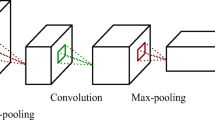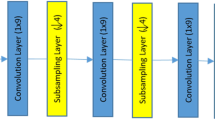Abstract
Deep transfer learning has evolved into a powerful method for defect identification, particularly in mechanical systems that lack sufficient training data. Nonetheless, domain divergence and absence of overlap between the source and target domains might result in negative transfer. This study examines the partial knowledge transfer, for bearing fault diagnosis, by freezing layers in varying proportions to take advantage of both freezing and fine-tuning strategies. To assess the proposed strategy, three distinct pre-trained models are used, namely ResNet-50, GoogLeNet, and SqueezeNet. Each network is trained using three different optimizers: root mean square propagation, adaptive moment estimation, and stochastic gradient descent with momentum. The suggested technique performance is evaluated in terms of fault classification accuracy, specificity, precision, and training time. The classification results obtained using the CWRU datasets show that the proposed technique reduces training time while enhancing diagnostic accuracy, hence improving bearing defect diagnosis performance.











Similar content being viewed by others
References
S. Devendiran, K. Manivannan, Vibration based condition monitoring and fault diagnosis technologies for bearing and gear components-a review. Int. J. Appl. Eng. Res. 11, 3966–3975 (2016)
Z. Liu, Y.S. Zou, Y.L. Jiang, H. Yu, G.F. Ding, A novel method for diagnosis of bearing fault using hierarchical multitasks convolutional neural networks. Shock. Vib. 2020, 1–4 (2020)
S. Fu, K. Liu, Y. Xu, Y. Liu, rolling bearing diagnosing method based on time domain analysis and adaptive fuzzy-means clustering. Shock. Vib. 2016, 1362 (2016)
S. Djaballah, K. Meftah, Detection and diagnosis of fault bearing using wavelet packet transform and neural network. Frat. ed Integ. Strut. 13(49), 291–301 (2019)
F. Al-Badour, M. Sunar, L. Cheded, Vibration analysis of rotating machinery using time–frequency analysis and wavelet techniques. Mech. Syst. Signal Process. 25(6), 2083–2101 (2011)
D. Zhong, W. Guo, D. He, An intelligent fault diagnosis method based on stft and convolutional neural network for bearings under variable working conditions (China). Prognost. Syst. Health Manage. Conf. 2, 1–6 (2019)
D. Verstraete, A. Ferrada, E. Droguett, V. Meruane, M. Modarres, Deep learning enabled fault diagnosis using time-frequency image analysis of rolling element bearings. Shock. Vib. 2017, 137395 (2017)
A. Widodo, B.S. Yang, Support vector machine in machine condition monitoring and fault diagnosis. Mech. Syst. Signal Process. 21(6), 2560–2574 (2007)
E. Song, F. Gao, C. Yao, Y. Ke, Research on rolling bearing fault diagnosis method based on improved LMD and CMWPE. J. Fail. Anal. Preven. 21, 1714–1728 (2021)
L. Eren, A. Karahoca, and M.J. Devaney, Neural network based motor bearing fault detection, in Proceedings of the 21st IEEE Instrumentation and Measurement Technology Conference, May 2004 (Italy), pp. 1657–1660
J. Khelil, K. Khelil, M. Ramdani, N. Boutasseta, Discrete wavelet design for bearing fault diagnosis using particle swarm optimization. IIETA. 53(5), 705–713 (2020)
D.T. Hoang, H.J. Kang, rolling element bearing fault diagnosis using convolutional neural network and vibration image. Cogn. Syst. Res. 53(6), 42–50 (2019)
Z. Chen, J. Cen, J. Xiong, Rolling bearing fault diagnosis using time-frequency analysis and deep transfer convolutional neural network. IEEE Access. 8, 150248–150261 (2020)
T. Lu, F. Yu, B. Han, J. Wang, A generic intelligent bearing fault diagnosis system using convolutional neural networks with transfer learning. IEEE Access. 8, 164807–164814 (2020)
G.E. Hinton, S. Osindero, Y. Teh, A fast learning algorithm for deep belief nets. Neural. Comput. 18(7), 1527–1554 (2006)
J. Gehring, Y. Miao, F. Metze, and A. Waibel, Extracting deep bottleneck features using stacked auto-encoders, in IEEE International Conference Acoust, Speech Signal Process, 26–31May 2013 (Canada), pp. 3377–3381
T. Zan, H. Wang, M. Wang, Z. Liu, X. Gao, Application of multi-dimension input convolutional neural network in fault diagnosis of rolling bearings. Appl. Sci. 9(13), 2690 (2019)
T. Ince, S. Kiranyaz, L. Eren, Real-time motor fault detection by 1-d convolutional neural networks. IEEE T. Ind. Electron. 63(11), 7067–7075 (2016)
L. Wen, X. Li, L. Gao, Y. Zhang, A new convolutional neural network-based data-driven fault diagnosis method. IEEE Trans. Ind. Electron. 65(7), 5990–5998 (2018)
K. Weiss, T.M. Khoshgoftaar, D. Wang, A survey of transfer learning. J. Big Data. 3(9), 365 (2016)
C. Grover, N. Turk, A novel fault diagnostic system for rolling element bearings using deep transfer learning on bispectrum contour maps. Eng. Sci. Technol. Int. 31, 1245 (2021)
Y. Liu, J. Li, Q. Li, Q. Wang, Transfer learning with inception resnet-based model for rolling bearing fault diagnosis. J. Adv. Mech. Des. Syst. Manuf. 16(2), JAMDSM0023 (2022)
F. Hlawatsch, G.F. Boudreaux-Bartels, Linear and quadratic time frequency signal representations. IEEE Signal Process. Mag. 9(2), 21–67 (1992)
S. Sivakumar, D. Nedumaran, Discrete time-frequency signal analysis and processing techniques for non-stationary signals. J. Appl. Math. Phys. 6(9), 1916–1927 (2018)
K. Khelil, F. Berrezzek, T. Bouadjila, GA-based design of optimal discrete wavelet filters for efficient wind speed forecasting. Neural Comput. App. 32(16), 4373–4386 (2021)
J. Kumar, M. Rashid, R.M. Musa, M.A. Razman, N. Sulaiman, R. Jailani, The classification of EEG-based wink signals: a CWT-transfer learning pipeline. ICT Exp. 7(4), 421–425 (2021)
Y. LeCun, L. Bottou, Y. Bengio, P. Haffner, Gradient-based learning applied to document recognition. Proc. IEEE. 86(11), 2278–2324 (1998)
M.S. Rathore, S.P. Harsha, Roller bearing failure analysis using gaussian mixture models and convolutional neural networks. J Fail. Anal. Preven. 22, 1853–1871 (2022)
C. Cui, Intelligent analysis of exercise health big data based on deep convolutional neural network. Comput. Intell. Neurosci. 325, 5020150 (2022)
K. He, X. Zhang, S. Ren, and J. Sun, Deep residual learning for image recognition, in IEEE Conference on Computer Vision and Pattern Recognition, 27–30 June 2016 (USA), pp. 770–778
C. Szegedy, W. Liu, Y. Jia, P. Sermanet, S. Reed, D. Anguelov, and D. Erhan, Going deeper with convolutions. in The IEEE Conference on Computer Vision and Pattern Recognition, 7–12 June 2015(USA), pp. 1–9
F.N. Iandola, S. Han, M.W. Moskewicz, K. Ashraf, W.J. Dally, and K. Keutzer, SqueezeNet: AlexNet-level accuracy with 50× fewer parameters and < 0.5 MB model size, pp. 12–25 (2016)
Y.N. Dauphin, H. de Vries, J. Chung, Y. Bengio, Rmsprop and equilibrated adaptive learning rates for non-convex optimization. Adv. Neural Inf. Process. Syst. 28, 1504–1512 (2015)
D. P. Kingma, J. Ba. Adam: a method for stochastic optimization, in 3rd International Conference on Learning Representations. ICLR 2015 May (USA), pp. 7–9
R. Jie, J. Gao, A. Vasnev et al., Adaptive hierarchical hyper-gradient descent. Int. J. Mach. Learn. Cyber. 13, 3785–3805 (2022)
S. Ruder. An overview of gradient descent optimization algorithms. arXiv:1609.04747 (2016)
R. Yan, F. Shen, C. Sun, X. Chen, Knowledge transfer for rotary machine fault diagnosis. IEEE Sens. J. 20(15), 8374–8393 (2020)
O. Russakovsky, J. Deng, H. Su et al., ImageNet large scale visual recognition challenge. Int. Jour. of Comp. Vis. 115(3), 211–252 (2015)
Author information
Authors and Affiliations
Corresponding author
Additional information
Publisher's Note
Springer Nature remains neutral with regard to jurisdictional claims in published maps and institutional affiliations.
Rights and permissions
Springer Nature or its licensor (e.g. a society or other partner) holds exclusive rights to this article under a publishing agreement with the author(s) or other rightsholder(s); author self-archiving of the accepted manuscript version of this article is solely governed by the terms of such publishing agreement and applicable law.
About this article
Cite this article
Djaballah, S., Meftah, K., Khelil, K. et al. Deep Transfer Learning for Bearing Fault Diagnosis using CWT Time–Frequency Images and Convolutional Neural Networks. J Fail. Anal. and Preven. 23, 1046–1058 (2023). https://doi.org/10.1007/s11668-023-01645-4
Received:
Accepted:
Published:
Issue Date:
DOI: https://doi.org/10.1007/s11668-023-01645-4




